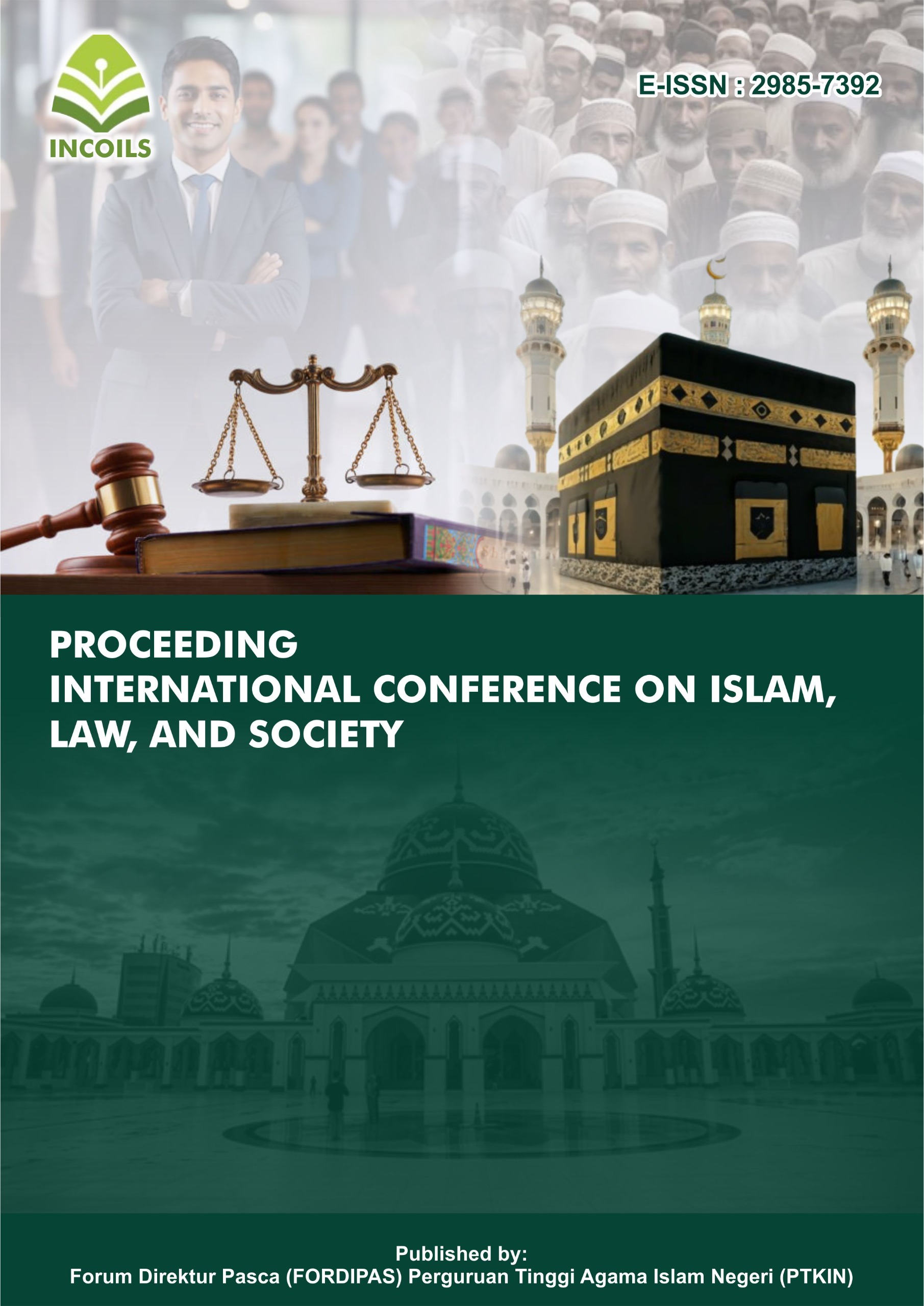NAHR (RIVER) AS AN ICON OF HEAVEN (Interpretation Analysis of Q.S 47:12-15 Contextual Theory Abdullah Saeed Perspective)
DOI:
https://doi.org/10.70062/incoils.v2i1.66Keywords:
Abdullah Saeed, Contextual, Nahr (River)Abstract
This article seeks to put Abdullah Saeed's approach to the contextual approach into practice. On the other hand, this article's verse is about the Nahr (river) image in heaven, which appears as a heaven icon. This verse was chosen to respond to the times' problems in modern-day sensory (seeing), leading us to a life that sparkles like heaven. Tajri> min tah}tiha> al-Anha>r is one of the things described in the Qur'an regarding the atmosphere of heaven (below it flows river water). People nowadays appear to be questioning the verses. If merely water runs beneath the floor, Dubai or other wealthy countries appear to be far more wonderful. This paper employs Abdullah Saeed's contextual technique to examine the picture of paradise in the Qur'an to address this concern. As a result of the analysis, it is discovered that the verse's value refers to materialism luxury, but Allah's communication media. He claims to be of more value than human life in the world. Allah revealed that verse using the story of running clean water in the desert, parched, hot, and far from springs.
References
Abi> Ha>tim, Abd al-Rahma>n bin Muahmmad bin Idris al-Razi> Ibnu. Tafsi>r Al-Qur’a>n al-‘Az}i>m Musnadan an Rasu>l Alla>h Wa al-Saha>bati Wa al-Ta>bi’I>n. Vol. 10. Makah: Niza>r Mus}t}afa> al-Ba>z, 1997.
———. Tafsi>r Al-Qur’a>n al-‘Az}i>m Musnadan an Rasu>l Alla>h Wa al-Saha>bati Wa al-Ta>bi’I>n. Vol. 8. Makah: Niza>r Mus}t}afa> al-Ba>z, 1997.
Bayd{awi>, Abdulla>h bin Umar bin Muhammad al-Shairazi> a-. Tafsi>r Al-Baid}awi> Anwa>r al-Tanzi>l Wa Asra>ru al-Ta’wi>l. Damaskus: Dar al-Rashi>d, 2000.
Darwish, Muh}y al-Di>n al-. I’ra>b al-Qur’a>n. Suriah: Dar al-Irshad, 1992.
Fayruza>ba>di>, Majd al-Di>n. Tanwi>r Al-Miqba>s Min Tafsi>r Ibnu ‘Abba>s,. Bairut: Dar al-Kutub al-‘Ilmiyah, 1992.
H{asan, Sulayma>n H{asan. Al-Jannah Fi> al-Qur’a>n; Aus}afuha>, Anwa>’uha> Wa Na’i>muha>. Yordania: al-Mana>r, 1988.
Kementrian Agama RI. Al Qur’an In Word, 2019.
Mahyuddin, Mahyuddin. “Social Climber Dan Budaya Pamer: Paradoks Gaya Hidup Masyarakat Kontemporer.” Jurnal Kajian Islam Interdisipliner 2, no. 2 (2017). https://doi.org/10.14421/jkii.v2i2.1086.
Musfiroh, Mayadina Rohmi, and Sahiron Syamsuddin. “Contextualization of Qiwamah Meaning: Reflection on Abdullah Saeed, Application and Consistency.” PALASTREN: Jurnal Studi Gender 13, no. 2 (December 3, 2020): 321–36. https://doi.org/10.21043/palastren.v13i2.7191.
Nasution, Syamruddin. Sejarah Peradaban Islam. Riau: Yayasan Pustaka, 2013.
Qurt}ubi>, Muhammad bin Ah}mad al-. Al-Ja>mi’ Li Ahka>m al-Qur’a>n. Bairut: Muassasat al-Risa>lah, 2006.
Ridwan, M. K. “Metodologi Penafsiran Kontekstual; Analisis Gagasan dan Prinsip Kunci Penafsiran Kontekstual Abdullah Saeed.” Millati: Journal of Islamic Studies and Humanities 1, no. 1 (June 15, 2016): 1–22. https://doi.org/10.18326/mlt.v1i1.1-22.
Saeed, Abdullah. Al-Qur’an Abad 21: Tafsir Kontekstual. Bandung: Mizan, 2016.
———. Interpreting the Qur’an: Towards a Contemporary Approach. London: Routledge, 2006.
———. The Qur’an: An Introduction. Routledge, 2008.
Salabi>, Ah}mad. Al-Ta>rikh Al-Islami>. Mesir: Mkatbat Nahd}ah, 1959.
Shihab, Quraish. Kaidah Tafsir. Tangerang: Lentera Hati, 2015.
———. Tafsir Al-Misbah. Vol. 13. Jakarta: Lentera Hati, 2005.
Sulaiman, Sofyan. “PRINSIP-PRINSIP KEUANGAN ISLAM MENURUT ABDULLAH SAEED.” Millah: Journal of Religious Studies, 2015, 135–60. https://doi.org/10.20885/millah.vol15.iss1.art7.
Zuhayli>, Wahbah al-. Tafsi>r Muni>r Fi Aqi>dati Wa Syri>’ah Wa Al-Manha>j. Vol. 13. Damaskus: Dar al-Fikr, 2003.
Downloads
Published
How to Cite
Issue
Section
License

This work is licensed under a Creative Commons Attribution-ShareAlike 4.0 International License.







